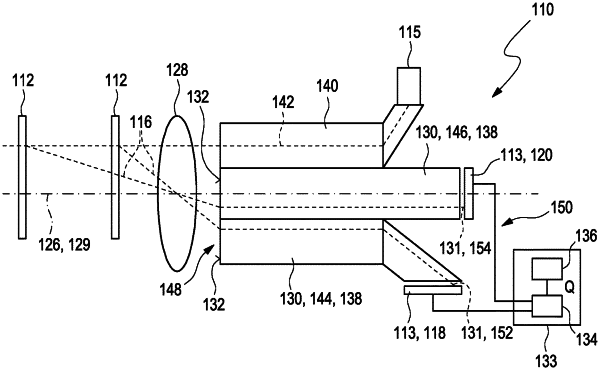| CPC G01S 17/46 (2013.01) [G01S 3/783 (2013.01); G01S 7/4808 (2013.01); G01S 7/4814 (2013.01); G01S 7/4816 (2013.01); G01S 7/4817 (2013.01); G01S 7/4818 (2013.01)] | 25 Claims |

|
1. A detector for determining a position of at least one object, the detector comprising:
at least one angle dependent optical element adapted to generate at least one light beam having at least one beam profile depending on an angle of incidence of an incident light beam propagating from the object towards the detector and illuminating the angle dependent optical element, wherein the angle dependent optical element comprises at least one optical element selected from the group consisting of: at least one optical fiber, in particular at least one multifurcated optical fiber, in particular at least one bifurcated optical fiber; at least one lens array arranged in at least one plane perpendicular to an optical axis of the detector, in particular at least one microlens array; at least one optical interference filter; at least one nonlinear optical element, in particular one birefringent optical element;
at least one transfer device, wherein the transfer device has at least one focal length in response to the at least one incident light beam propagating from the object to the detector;
at least two optical sensors, wherein each optical sensor has at least one light sensitive area, wherein each optical sensor is designed to generate at least one sensor signal in response to an illumination of its respective light-sensitive area by the light beam generated by the angle dependent optical element;
at least one evaluation device being configured for determining at least one longitudinal coordinate z of the object by evaluating a combined signal Q from the sensor signals;
wherein the evaluation device is configured for deriving the combined signal Q by one or more of dividing the sensor signals, dividing multiples of the sensor signals, dividing linear combinations of the sensor signals;
wherein the evaluation device is configured for using at least one predetermined relationship between the combined signal Q and the longitudinal coordinate for determining the longitudinal coordinate.
|